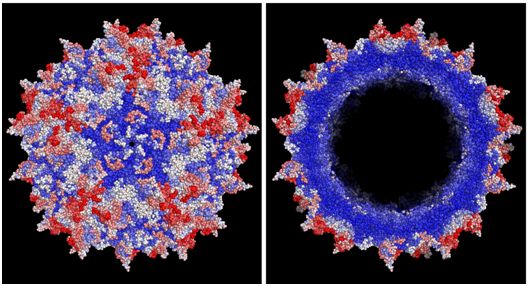In the wave of gene therapy recently being developed by academic research laboratories and biotechnology laboratories, adeno-associated virus (AAV) has become the carrier of choice for delivering therapeutic genes to target tissues.
Natural AAVs can not specifically target diseased cells and tissues, they can be recognized by the immune system, thus limiting their therapeutic success. In order to optimize AAV, synthetic biologists have been using the "directed evolution" method, that is, in the capsid proteins that make up the AAV virus capsid, randomly mutate specific amino acids of the capsid protein that directly contacts the target cell. By assessing which amino acid changes can deliver AAV to the target tissue, and cascading mutations one after the other during difficult iterations, the researchers aim to improve the required AAV characteristics.
In a new study, researchers from Harvard's Weiss Institute for Biologically Inspired Engineering and Harvard Medical School report a method that can speed up the process of making such improved AAV capsids and develop better AAV viruses. Related research results were recently published in the journal of Science. 
Under the leadership of Dr. George Church, a core member of the Weiss Institute for Bioinspired Engineering, and his former postdoctoral fellow, Dr. Eric Kelsic, these researchers deployed advanced synthetic biology equipment, including next-generation DNA synthesis, DNA barcodes, and DNA sequencing instruments to build one of the most comprehensive AAV capsid libraries to date.
These high-throughput technologies combined with machine-guided design lay the foundation for constructing excellent highly customized AAV variants for future gene therapy. The old methods, such as rational design or random mutagenesis, each have their own disadvantages. The former is limited by the size of the library and the latter is limited by the lower quality. Machine guided design is a data-driven approach in protein engineering. In this new study, they confirmed that even a simple mathematical model can successfully produce active synthetic capsids with sufficient data to support it. In protein engineering, this iterative and empirical method allows researchers to combine the advantages of rational design and random mutagenesis, and then produce a large number of high-quality capsid variants.
Researchers discovered a different reading frame located within the AAV-2 capsid DNA sequence encodes a new protein during the experiment, the membrane-associated accessory protein (MAAP), which is found in all the most popular AAV serotypes. They believe it plays a role in the natural life cycle of the virus. Exploring the capabilities of MAAP will be an exciting area for future research and has the potential to better understand how to better develop and design AAV-based gene therapies.
This study reveals the prospect of data-driven protein engineering, especially for proteins such as AAV capsid proteins, which are difficult to model using current computational methods. The current research is only the first step, and scientists will utilize this data to build machine learning models to optimize AAV capsids and meet a variety of gene therapy challenges.

